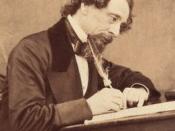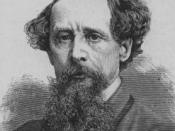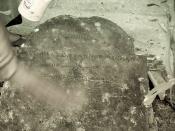Dickens' piece "The Coming of the Railway" from Dombey and Son was very powerful in
illustrating the impact of the Industrial Revolution. The visuals come as shock from the
past two weeks with the Romantics look at nature and the beauty of the English
landscape, and have brought us back to Blake's "London". Well, such is the bane of
progress. To begin, the piece starts off by describing the emergence of a new railroad in
the city, with creates some interesting visuals. Dickens writes "here, a chaos of carts,
overthrown and jumbled together, lay topsy-turvy at the bottom of a steep unnatural hill;
there, confused treasures of iron soaked and rusted in something that had accidentally
become a pond" (1056). The visuals in this line show the contrast between nature and
man-made, for what was once perfect, symmetrical, and possibly colorful, is
now "unnatural", "iron-soaked", "rusted", and ultimately and accident.
The earth has
been severely altered all for the sake of technology, to the point where the earth itself no
longer exists. He then follows up the last sentence by further describing the radical
changes technology, in the form of the railroad has brought, stating
"Everywhere were bridges that led nowhere; thoroughfares that were wholly
impassable; Babel towers of chimneys, wanting half their height; temporary wooden
houses and enclosures, in the most unlikely situations; carcasses of ragged tenements,
and fragments of unfinished walls and arches and piles of scaffolding, and wildernesses
of bricks, and giant forms of cranes, and tripods straddling above nothing" (1056).
Life is forever changed, and the chaos of technology is seen in the ever-changing
landscape of the city as described by Dickens. Buildings reaching toward the sky,
bridges that span rivers for no reason, whatever else technology feels the need to build it...


